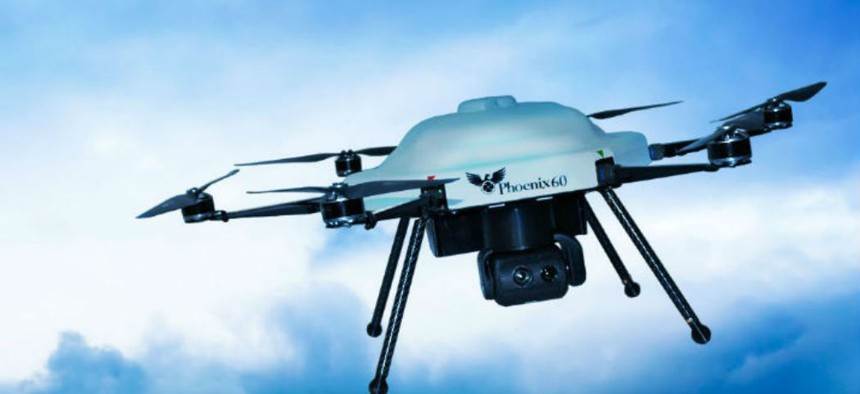DARPA fast tracks drone swarm tech to fight with combat units
OFFSET drone swarm will create structure for groups of 250 or more air and ground robots.
DARPA's plan to flood the battlefield with hundreds of robots is entering a new stage.
The agency wants to bring in special teams to develop tactics for deploying swarms of unmanned aircraft and ground vehicles to help U.S. soldiers in urban warfare.
DARPA's Offensive Swarm-Enabled Tactics (OFFSET) program aims to create the command and control structure to allow swarms of 250 or more air and ground robots to team up with human combat units for tasks such as reconnaissance, surveillance and clearing out enemy-held buildings. DARPA has awarded Phase I development contracts to two teams led by Raytheon and Northrop Grumman.
But DARPA is taking another approach to fast-tracking OFFSET. The two development teams will continue to design an open-architecture system to control swarms of drones. "Each system would include an extensible game-based architecture to enable design and integration of swarm tactics, a swarm tactics exchange to foster community interaction, immersive interfaces for collaboration among teams of humans and swarm systems, and a physical testbed to validate developed capabilities," DARPA spokesman Jared Adams told Defense Systems.
At the same time, the agency will solicit what it calls "swarm sprints," where outside participants can collaborate with the two prime design teams, and with each other, to conduct various experiments formulated by DARPA. Every six months, the agency will solicit proposals from potential sprinters in five core areas: swarm tactics, swarm autonomy, human-swarm teaming, virtual environment, and physical testbed. In addition, there will be impromptu sprints to address other areas. "The experiments would also provide direct engagement between DARPA, the teams and sprinters, and warfighters who could help further tailor OFFSET capabilities to meet real-world operational needs," Adams said. "We anticipate that ad hoc swarm sprints could take place concurrently during core swarm sprints."
The first challenge for the sprinters? Devise tactics for a drone swarm operating according to the following scenario: a mixed swarm of 50 air and ground robots to isolate an urban objective within an area of two square city blocks over a mission duration of 15 to 30 minutes. Mission objectives include reconnaissance, identifying ingress and egress points, and establishing a perimeter around an area where operations are underway.
Scenario 2 will require tactics for a raid by 100 drones on an urban area of four square blocks, lasting one to two hours. Scenario 3 will be the largest of all: 250 drones seizing an urban area of eight blocks, for four to six hours.
What's unusual about OFFSET is the concept of generating tactics for drone swarms on the spot in real time, rather than tactics being pre-programmed. A January 2017 presentation by Timothy Chung, a program manager in DARPA's Tactical Technology Office, listed a variety of goals. Updating tactics for a drone swarm in the midst of a mission should take less than a minute. Creating more than three viable, alternative courses of action that a swarm could take should also take less than one minute.
Chung also addressed tactics by drone swarms functioning autonomously: More than 10 tactics created per calendar quarter, less than 15 minutes to assess them in a game-based environment, and less than 24 hours for those tactics to be integrated into the robots themselves.
The key question at the heart of swarm robot projects like OFFSET is less about robots and more about humans. How does a human operator, say a single operator, control hundreds of robots at a time? DARPA says it will use a "realistic game-based environment," though it's not clear whether this will comprise some kind of video game-like control interface. An artist's conception in Chung's presentation showed a soldier surrounded by what seemed to be 3-D images of aerial and ground drones.




